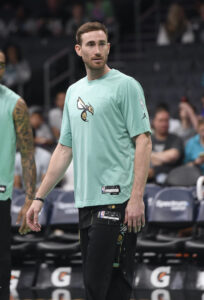The 2023 NBA draft lottery will take place on Tuesday night prior to Game 1 of the Western Conference Finals between the Nuggets and Lakers. The half-hour event will be broadcast on ESPN beginning at 7:00 pm Central time.
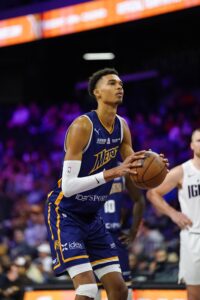 This year’s draft pool features potential superstar Victor Wembanyama, who is widely considered to be the best prospect to enter the NBA draft since LeBron James in 2003.
This year’s draft pool features potential superstar Victor Wembanyama, who is widely considered to be the best prospect to enter the NBA draft since LeBron James in 2003.
Other prospects, including Scoot Henderson and Brandon Miller, would make terrific consolation prizes, but every team with a lottery pick will enter Tuesday night dreaming on the possibility of landing the No. 1 selection and drafting the French phenom Wembanyama.
Here’s what you need to know heading into tonight’s lottery:
Pre-Lottery Draft Order:
The top 14 picks in the 2023 NBA draft would look like this if tonight’s lottery results don’t change the order:
- Detroit Pistons
- Houston Rockets
- San Antonio Spurs
- Charlotte Hornets
- Portland Trail Blazers
- Orlando Magic
- Indiana Pacers
- Washington Wizards
- Utah Jazz
- Dallas Mavericks
- Note: The Knicks will receive this pick if it falls out of the top 10.
- Orlando Magic (from Bulls)
- Note: The Bulls will retain this pick if it moves into the top four.
- Oklahoma City Thunder
- Toronto Raptors
- New Orleans Pelicans
For the full pre-lottery draft order, click here.
Draft Lottery Odds: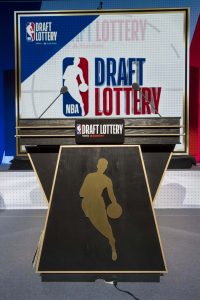
The Pistons, Rockets, and Spurs have the best odds to land the No. 1 pick. Each of those four teams has a 14.0% chance to pick first overall.
From there, the Hornets (12.5%), Trail Blazers (10.5%), Magic (9.0%), Pacers (6.8%), and Wizards (6.7%) have the next-best odds to receive the first overall pick.
When the NBA introduced its new lottery format in 2019, the selling point was that the new system flattened the odds, making it less likely that the league’s very worst teams would claim a top pick.
Before the NBA tweaked the lottery rules, there was a 60.5% chance that one of the league’s bottom three teams would secure the No. 1 pick and only a 27.6% chance that a team in the 5-14 range of the lottery standings would do so. Now, those odds are 42.0% and 45.5%, respectively.
Still, there haven’t been many huge surprises in the years since the new format was implemented.
The Pelicans moved up from No. 7 in the lottery standings in 2019 to claim the first overall pick, which they used on Zion Williamson. Since then though, every team to win the draft lottery has been in the top three in the lottery standings.
Perhaps we’re due for a more significant shake-up in 2023. There’s a 19.2% chance that a team in the back half of the lottery (Nos. 8-14) wins the No. 1 pick. That works out to about 1-in-5 odds, and this will be the fifth time the NBA has employed its revamped lottery format.
For this year’s full draft lottery odds for all 14 spots, click here.
For full details on the revamped lottery format, click here.
Trades Affecting The Draft Lottery:
Dallas and Chicago finished as lottery teams in 2022/23, but each may have to convey its first-round pick to another team, depending on Tuesday’s results.
The Mavericks traded their 2023 first-round pick to the Knicks, but would keep that selection if it lands within the top 10. There’s a 79.8% chance that will happen and a 20.2% chance it will slip to No. 11 or below and be sent to New York.
If Dallas retains its first-rounder this year, the club would instead owe its 2024 first-round pick (top-10 protected) to the Knicks.
The Bulls, meanwhile, owe the Magic their top-four protected first-round pick. There’s just an 8.5% chance Chicago will hang onto that selection and a 91.5% chance it will fall between Nos. 11-14 and be sent to Orlando.
If the Bulls get lucky and move into the top four, they’d owe Orlando their 2024 first-round pick with top-three protection.
Draft Lottery Representatives:
The representatives for each of this year’s lottery teams are as follows, according to a pair of announcements from the NBA:
- Detroit Pistons
- On stage: Ben Wallace (basketball operations and team engagement advisor)
- Lottery room: Jon Phelps (senior director of basketball strategy)
- On stage: Ben Wallace (basketball operations and team engagement advisor)
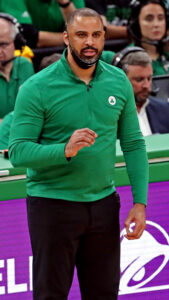 Houston Rockets
Houston Rockets
- On stage: Ime Udoka (head coach)
- Lottery room: Clay Allen (general counsel)
- San Antonio Spurs
- On stage: Peter J. Holt (team owner)
- Lottery room: Brian Wright (general manager)
- On stage: Peter J. Holt (team owner)
- Charlotte Hornets
- On stage: Mark Williams
- Lottery room: Buzz Peterson (general manager / senior VP of basketball operations)
- Portland Trail Blazers
- On stage: Brandon Roy (former Trail Blazers player)
- Lottery room: Sergi Oliva (assistant GM)
- Orlando Magic
- On stage: Jamahl Mosley (head coach)
- Lottery room: Joel Glass (chief communications officer)
- Indiana Pacers
- On stage: Tyrese Haliburton
- Lottery room: Kevin Pritchard (president of basketball operations)
- On stage: Tyrese Haliburton
- Washington Wizards
- On stage: Wes Unseld Jr. (head coach)
- Lottery room: Brett Greenberg (assistant GM / strategy and analytics)
- Utah Jazz
- On stage: Collin Sexton
- Lottery room: Ryan Smith (team owner)
- Dallas Mavericks
- On stage: Nico Harrison (president of basketball operations / general manager)
- Lottery room: Michael Finley (assistant GM / VP of player personnel)
- On stage: Nico Harrison (president of basketball operations / general manager)
- Chicago Bulls
- On stage: Dalen Terry
- Lottery room: Pat Connelly (assistant GM)
- On stage: Dalen Terry
- Oklahoma City Thunder
- On stage: Nick Collison (former Thunder player / amateur evaluation scout)
- Lottery room: Sam Presti (executive VP / general manager)
- Toronto Raptors
- On stage: Bobby Webster (general manager)
- Lottery room: Teresa Resch (VP of basketball operations)
- New Orleans Pelicans
- On stage: David Griffin (executive VP of basketball operations)
- Lottery room: Bryson Graham (assistant GM)
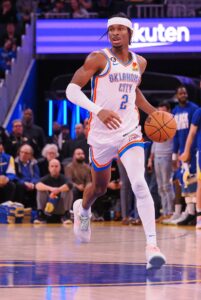
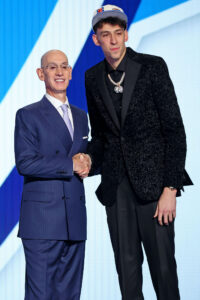
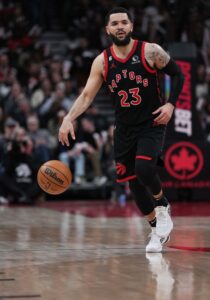 On paper, the Raptors looked like a team that should have finished better than .500.
On paper, the Raptors looked like a team that should have finished better than .500. 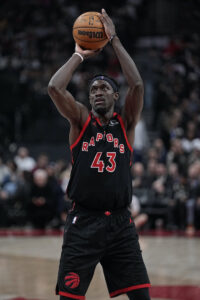
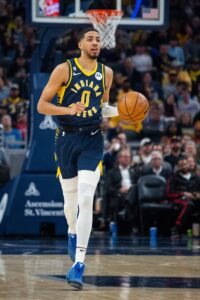 Indiana only has five free agents (including both two-way players) entering the offseason, and president of basketball operations Kevin Pritchard has already said that the team’s interest in bringing back
Indiana only has five free agents (including both two-way players) entering the offseason, and president of basketball operations Kevin Pritchard has already said that the team’s interest in bringing back 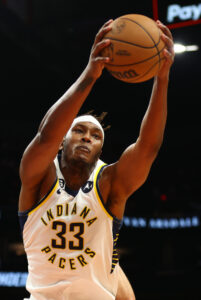
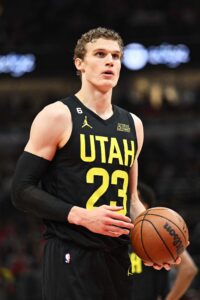 But it was
But it was 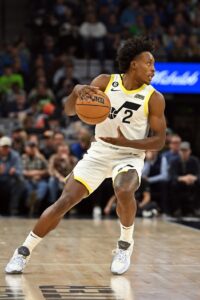
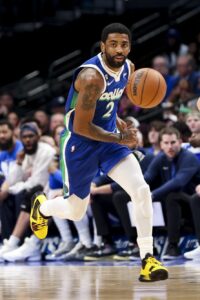 No cap hold can exceed the maximum salary for which a player can sign. For example, the cap hold for a Bird player with a salary above the league average is generally 150% of his previous salary, as noted above. But for someone like Mavericks star
No cap hold can exceed the maximum salary for which a player can sign. For example, the cap hold for a Bird player with a salary above the league average is generally 150% of his previous salary, as noted above. But for someone like Mavericks star 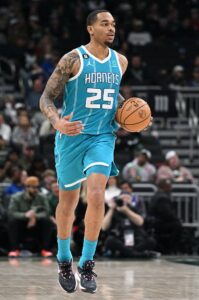 Unfortunately, the Hornets took a major step back this season from a win/loss perspective, going 27-55. Injuries to players up and down the roster certainly played a part in that decline, with only
Unfortunately, the Hornets took a major step back this season from a win/loss perspective, going 27-55. Injuries to players up and down the roster certainly played a part in that decline, with only 